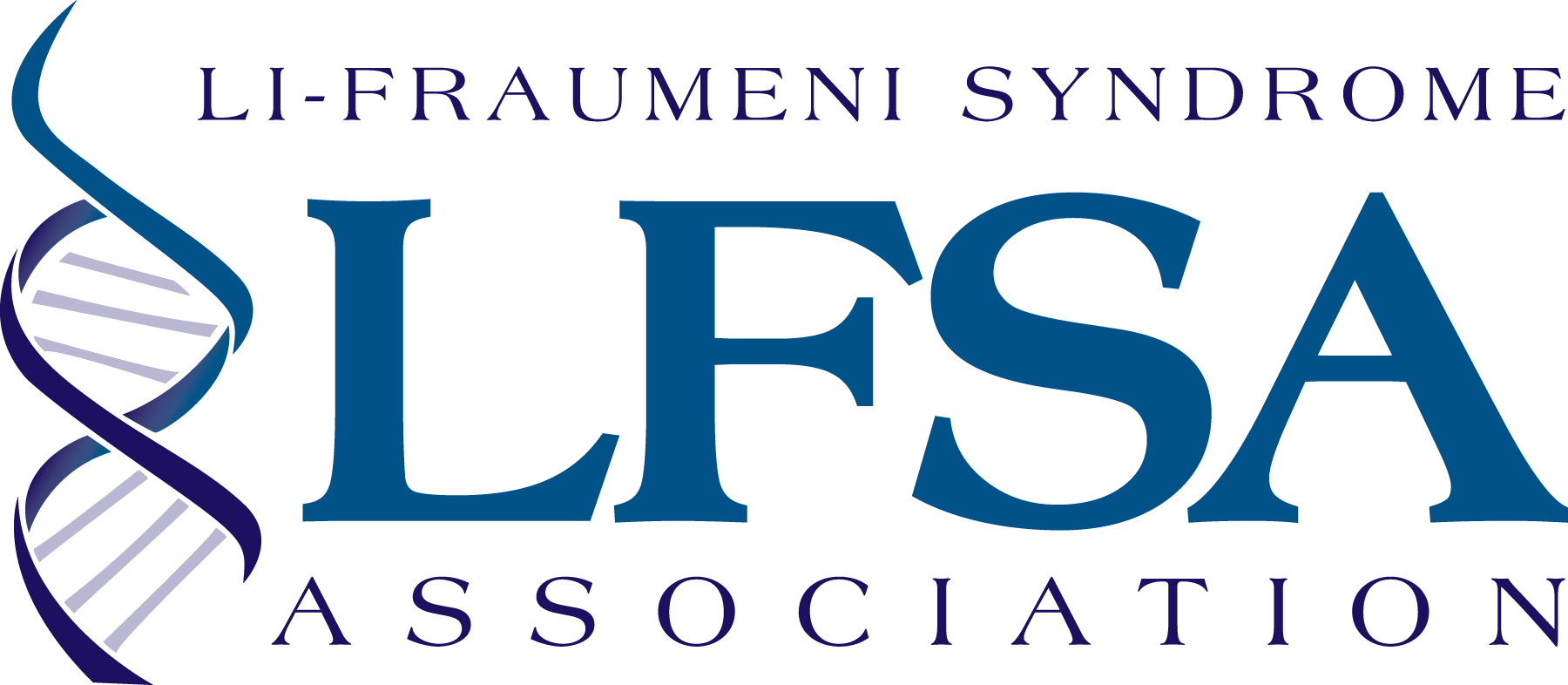Li-Fraumeni syndrome (LFS) is an inherited predisposition to a wide range of certain cancers caused by pathogenic TP53 germline variants. Both children and adults are susceptible to developing multiple cancers, most notably soft-tissue and bone sarcomas, breast cancer, brain tumors, adrenocortical carcinoma and leukemia. Other cancers seen in LFS patients include gastrointestinal cancers and cancers of the lung, kidney, thyroid, skin, prostate, and ovaries, among others.
It is important to know that not everyone with a TP53 gene variant will develop cancer, but the risk is substantially higher than among the general population. It is essential that individuals with a family history of cancer, including early-onset and multiple cancers, be tested to determine if they have LFS. An early diagnosis is critical and enables affected families to seek genetic counseling as well as surveillance for early detection. An early diagnosis of LFS can be lifesaving.
Introduction
LFS was first clinically identified in 1969 by Drs. Frederick Li and Joseph Fraumeni, Jr., while studying what appeared to be cancer clusters in families at the National Cancer Institute. They described four families with multiple early-onset cancers in children and young adults who had been diagnosed with sarcoma, breast cancer, and other neoplasms. The syndrome was first referenced as “Li-Fraumeni syndrome” in 1982 by scientists in the United Kingdom who described two families with multiple forms of cancer in young people.
In 1990, inherited variants of TP53 were discovered to be the primary cause of LFS. This finding provided an invaluable opportunity for genetic testing and clinical interventions that enabled cancer prevention, early cancer detection, and the treatment of cancer for those with LFS. The landmark finding also fueled further molecular research into TP53 which is commonly found in the tumor tissue of cancer patients.
Signs & Symptoms
LFS may be suspected if someone has a personal or family history of cancers featured in LFS. In addition, there are certain rare cancers that are characteristic of the syndrome that should alert clinicians to the potential of an LFS diagnosis. Individuals and families with multiple childhood cancers, or specific rare cancers such as adrenocortical carcinoma, choroid plexus carcinoma, anaplastic rhabdomyosarcoma, sonic hedgehog medulloblastoma, hypodipoid acute lymphoblastic leukemia, osteosarcoma or breast cancer in young women should alert practitioners to the potential of a hereditary cancer syndrome such as LFS. Although increasingly identified as a hereditary cancer syndrome in medical and scientific literature, not all physicians are aware of LFS.
Cancers most closely associated (core cancers) with LFS include:
- Soft tissue sarcoma
- Osteosarcoma
- Breast cancer
- Brain and CNS tumors (glioma, choroid plexus carcinoma, SHH subtype medulloblastoma)
- Adrenocortical carcinoma
- Acute leukemia
Other cancers that have developed in those with LFS include:
- Gonadal germ cells (such as ovarian, testicular, and prostate)
- Lung adenocarcinoma
- Melanoma
- Gastrointestinal tumors (such as colon, pancreas)
- Kidney
- Thyroid
Individuals with LFS have an approximately 50% chance of developing cancer by age 40, and up to a 90% percent chance by age 60. Females with LFS have a risk as high as a 90% risk of developing cancer in their lifetime due to their markedly increased risk of breast cancer. Many individuals with LFS develop two or more primary cancers over their lifetime which generally occur in age-related phases.
However, with increased access to genetic testing, germline variants of the TP53 are being more frequently detected in the general population, in some cases, with no manifestation of cancers in the family: individuals with a pathogenic or likely pathogenic TP53 variant are increasingly being identified who do not otherwise meet the clinical criteria for genetic testing. This has directed researchers to develop new classifications of the Li-Fraumeni spectrum.
Spectrum of Li-Fraumeni Syndrome
First introduced at the 5th International LFS Association Symposium in 2020, the spectrum of Li-Fraumeni has been delineated into categories that describe variations of cancer appearances in families:
In short, categories include:
- LFS: testing criteria are met or cancer has been diagnoses before age 18 with a pathogenic or likely pathogenic variant in TP53 is present
- Phenotypic LFS: classic or Chompret category A criteria are met but no pathogenic or likely pathogenic variant is present in TP53
- Attenuated LFS: pathogenic or likely pathogenic variant in TP53 is present but testing criteria are not met and no cancer has been diagnosed prior to age 18.
Please reference Anaylsis of the LFS Spectrum (JAMA 2021) for additional details as well as Genotype–phenotype associations within the Li‑Fraumeni spectrum: a report from the German Registry.
Mosaicism
In a developing embryo, a somatic TP53 mutation can occur. Depending on the timing and the type of the affected cell, this leads to a mosaic state wherein some cells in a person’s body have a different makeup than others. Due to the elevated cancer risk in cells carrying this variant, affected individuals may have risks similar to the risks in people with a germline TP53 pathogenic or likely pathogenic variant. In mosaicism, the specific alteration of TP53 may not be discovered during genetic screening if the white bloods cells aren’t affected and don’t carry the mutation. Additional testing of other tissues may be required and/or algorithms of genetic allele frequency of tumors may be employed to help determine if the alteration in the tumor is sporadic or germline.
See “Criteria for LFS” for more information

